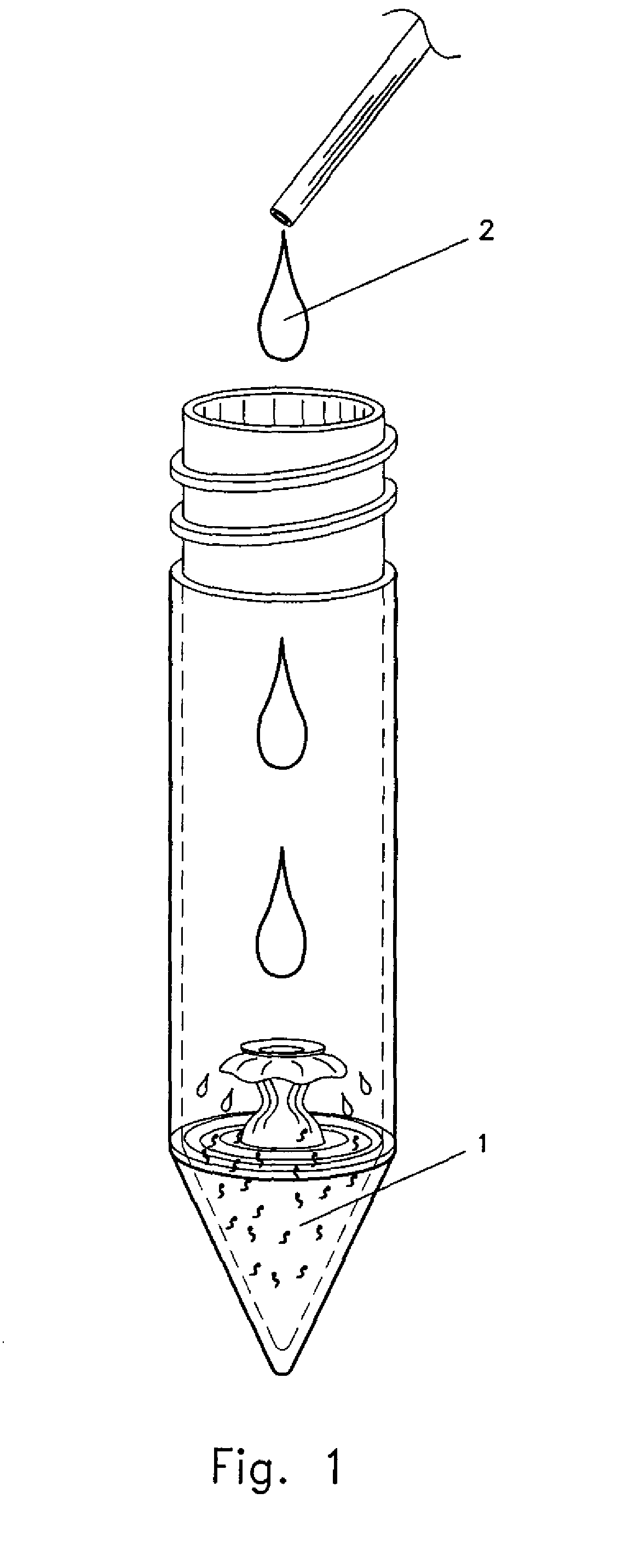Separation Systems of Frozen-Thawed Spermatozoa Into X-Chromosome Bearing and Y-Chromosome Bearing Populations
a technology of spermatozoa and xchromosomes, applied in the field of separation systems of frozenthawed spermatozoa into xchromosome bearing and y-chromosome bearing populations, can solve the problems of lack of uniformity, significant problems to be resolved, and it is difficult or impossible to classify individual spermatozoa to one population or the other with any degree of certainty
- Summary
- Abstract
- Description
- Claims
- Application Information
AI Technical Summary
Benefits of technology
Problems solved by technology
Method used
Image
Examples
Embodiment Construction
[0028] To routinely separate spermatozoa (live, fixed, viable, non-viable, or nuclei) into high purity X-chromosome bearing samples and into Y-chromosome bearing samples, the method used to sort the X-chromosome bearing and Y-chromosome bearing spermatozoa must provide sufficient resolution of the X-chromosome bearing spermatozoa from the Y-chromosome bearing spermatozoa so that separation or sorting step(s) can be achieved without substantial cross contamination.
[0029] Resolution or differentiation of spermatozoa can be based upon ascertaining the difference in the fluorescent emission from the amount of fluorochrome bound to the DNA within the X-chromosome bearing spermatozoa upon excitation and the fluorescent emission from the amount of fluorochrome bound to the DNA within the Y-chromosome bearing spermatozoa upon excitation. Separation of X-chromosome bearing spermatozoa and Y-chromosome bearing spermatozoa based upon this measurable difference may then be achieved by a number...
PUM
| Property | Measurement | Unit |
|---|---|---|
| temperature | aaaaa | aaaaa |
| dispersion | aaaaa | aaaaa |
| concentration | aaaaa | aaaaa |
Abstract
Description
Claims
Application Information
 Login to View More
Login to View More - R&D
- Intellectual Property
- Life Sciences
- Materials
- Tech Scout
- Unparalleled Data Quality
- Higher Quality Content
- 60% Fewer Hallucinations
Browse by: Latest US Patents, China's latest patents, Technical Efficacy Thesaurus, Application Domain, Technology Topic, Popular Technical Reports.
© 2025 PatSnap. All rights reserved.Legal|Privacy policy|Modern Slavery Act Transparency Statement|Sitemap|About US| Contact US: help@patsnap.com



